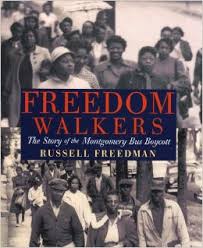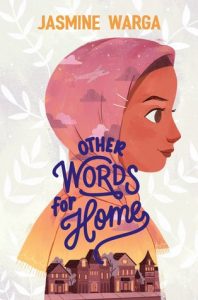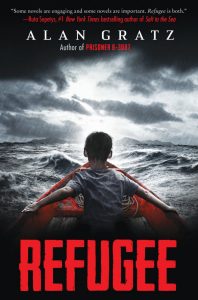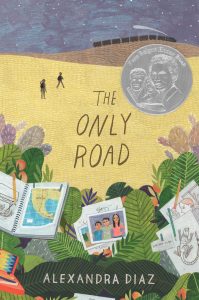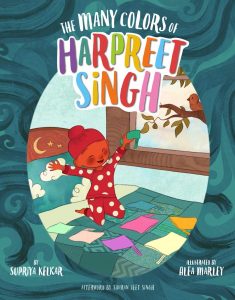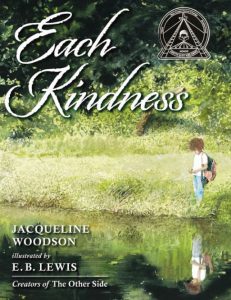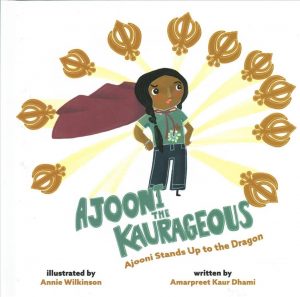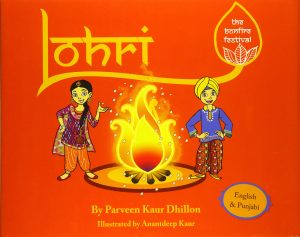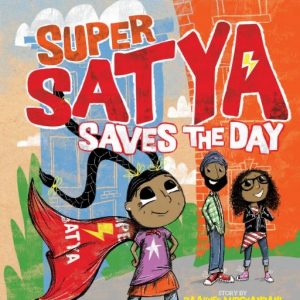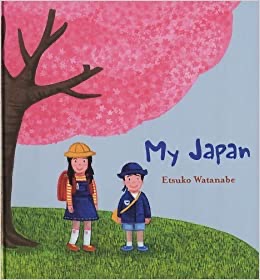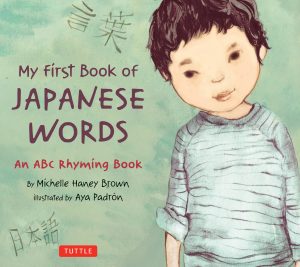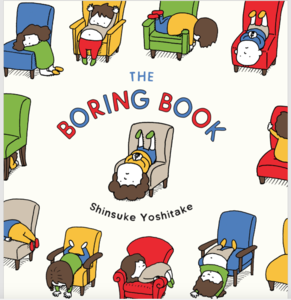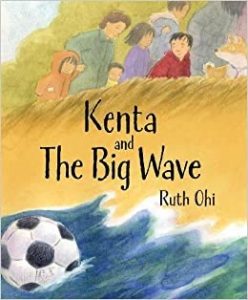Bridging the Gap: Embracing Difference in the Pacific Northwest
Kaitlynn DeMoney and Desiree Cueto, with Randy Cueto and Courtney Kooy
A group of teachers in Whatcom County came together in response to acts of racism and xenophobia that plagued the United States as well as our local communities. As educators, we routinely participated in workshops designed to enhance our ability to teach with a focus on cultural sustainability (Paris & Alim, 2017). We were no strangers to discussing issues of equity and diversity within our classrooms. However, many of us had never experienced the level of staunch resistance to inclusion that was happening across the U.S. during the 2019-2020 school year. Therefore, our primary goal in forming the Whatcom County Global Literacy Community (WCGLC) was to find ways to facilitate intercultural understanding that might help students consider the benefits of thinking and acting globally. Teachers in various districts across Whatcom county worked together with Desiree Cueto from Western Washington University to select and purchase global literature to incorporate into the curriculum.
The WCGLC worked collaboratively throughout the year to enrich our classrooms by utilizing global books that featured themes relevant and impactful to our student groups. We wanted to situate our teaching within a theoretical framework that would help students grapple with the issues brought forward in the books. The most influential theory guiding our teaching was cosmopolitanism, which posits that we can become citizens of the world by engaging with people from other cultures to develop a deeper understanding of the world. In doing so, we must work to accept differences in thinking and ways of living, even when they don’t align with our own practices, or if we disagree (Onyx, Ho, Edwards, Burridge & Yerbury, 2011). The current landscape and climate of the U.S., which trickles into schools, made our study of cosmopolitanism and our work with global literature not only timely, but also crucial.
At the time of our study, the United States was in the midst of political turmoil that has not surfaced so intensely in decades. Our students were regularly exposed to violent and xenophobic rhetoric from political leaders and organizations. There was a growing divide between privileged groups, who felt emboldened by the open bigotry being displayed by leaders towards marginalized groups, who had to endure the consequences of such hateful rhetoric. We feared that if students were exposed to negative, ethnocentric messages, without proper intervention, there was a strong chance that they might adopt these ideals as their own (Short, 2019). Therefore, it was imperative that the WCGLC community provide authentic opportunities for students to become citizens of the world.
We share three stories in which teachers used global literature to promote intercultural understanding with their students. The first story features Kaitlynn DeMoney who shares the integrated sixth-grade unit she created using an immigration themed text set. Kait selected texts, such as Other Words for Home by Jasmine Warga (2019) and Refugee by Alan Gratz (2017), along with a variety of online sources and media that guided students’ inquiry into the reasons why people leave their home countries for other permanent destinations, and how these experiences might impact their lives. The second story details Randy Cueto, a second-grade teacher, who used a set of picturebooks and relied on insider perspectives from the local community to engage students in a study of the Sikh religion and Punjabi culture. Included in the list of books Randy introduced were The Many Colors of Harpreet Singh by Supriya Kelkar (2019), What is a Patka? by Tajinder Kalia (2019), and Vaisakhi by Deep Kaur (2016). Lastly, Courtney Kooy, an English language arts teacher, provided sixth- to eighth-grade students an opportunity to study Japanese language and culture in an afterschool club setting. Courtney introduced students to books such as My Japan by Etsuko Watanabe (2009) and The Moon Princess by Hazuki Kataoko and David Batinno (n.d.). She also brought in guest speakers to teach Haiku and supported student inquiries into Japanese art techniques.
Whatcom County is located roughly thirty miles from the United States and Canadian border in Washington state. At a glance, the area is racially and culturally homogenous. With an estimated 86% of the population identifying as white according to the US Census Bureau, over half of the population are homeowners and the median income is $56,000 a year (Data USA, 2017). However, this is only the surface of what our communities represent. When delving deeper into each of our contexts, all of which are geographically distinct, we discovered pockets of diversity that are often overlooked. For example, the Northeastern part of the county consists largely of Eastern European immigrant families, for whom poverty is an extreme issue in many cases. There is also a sizable Sikh and Punjabi community in the area that has been the target of racially motivated hate crimes. There are families who are undocumented or who reside temporarily in the area as migrant workers. Beyond that, there are groups of international and multicultural students who attend Western Washington University located in Bellingham, Washington. Above all, the first residents of Whatcom County were Coast Salish people including the Lummi, Nooksack, Samish, and Semiahmoo who inhabited the region for thousands of years before settler colonialists arrived.
Despite the vital significance of these diverse communities to Whatcom County, the white residents have not always taken kindly to those they consider to be outsiders. Tensions surrounding who belongs and which groups should be excluded started long ago. The current xenophobic and racist discourses at the national level have added fervor to these tensions. Dating back to 1880s, the people of Whatcom County forced Chinese and other Asian immigrant families to leave town. As recently as the 1930s, the Klu Klux Klan (KKK) regularly hosted gatherings, burning crosses and even taking part in parades in Whatcom County. As we looked more closely into the history of the area, we discovered that, at one point, the mayor of Bellingham gave a high ranking KKK member a key to the city (Stout, 2018). We concluded that the possibility that members of this hate group might be living relatives of students was very real.
For many people in the area, there is still very much an us-versus-them mentality that, unchecked, has seeped into the consciousness of students. Each of the teachers involved in this project shared our own experiences under the shade of the lingering beliefs that hover like trees in our classrooms. There is a palpable sense that students have come to see the “other” as dangerous and unwanted. To make matters more difficult, we realized that some teachers in our districts may find discomfort in engaging students in discussions related to cultural and global issues. These concerns have been exacerbated in the current political context, causing teachers to be more fearful of stepping on toes if they raise issues faced by global communities.
We concluded that, more than ever, teachers in Whatcom County have a tremendous responsibility for taking measured steps towards engaging students with content that challenges divisive messages. Our students deserve to learn the skills they need to become thoughtful citizens who can critically question the messages they are getting. We want students to be able to form their ideals around the belief that diversity makes us better as a nation. We want students to think critically, understanding that learning does and should create tensions, and these tensions lead students to deeper understandings of themselves and the world they live in (Armstrong, Everett, & Schmidt, 2007).
Cosmopolitanism in Isolated Communities: Kait DeMoney
There are many benefits that go hand in hand with working in a small, historically close-knit community like Washington’s Mount Baker community. Families have lived in the area for hundreds of years and are deeply invested in continuing the traditions of their ancestors. Many of the families in the area are descendants of European immigrants who arrived in the Pacific Northwest during the pioneering days in the 1800s. Other families have been here long before the European settlers arrived, such as the Indigenous people of the Salish Sea, including the Nooksack and Lummi people, who are equally invested in the growth and well-being of the community as it is today. People in this community know the recent and not so recent history well, and many people who live there are related by blood or marriage.
As a teacher privileged to serve this group of people and their children, I see so many wonderful things that are a part of living in a small rural community. I also see the effects of long-term isolation that comes with remaining close to the familiar for generations upon generations. In my four years teaching in this school district, I have had some experiences with children, families, and community members that gave me pause. One such experience occurred in my first year of teaching when I was teaching second grade. The event involved a tough conversation after a reading of My Brother, Martin: A Sister Remembers Growing Up with the Reverend Dr. Martin Luther King Jr., by Christine King Farris (2006). Second-grade students became very upset when one student asked, “Is our school segregated? There are only white people here!” This child voiced the apparent truth that, even though we have students of color in our school, there are so few that students believed we might still be legally segregated.
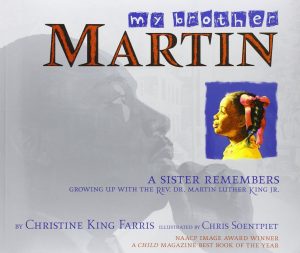
Figure 1. My Brother, Martin: A Sister Remembers Growing Up with the Reverend Dr. Martin Luther King Jr., by Christine King Farris (2006).
During my fourth year as a teacher, and third year in a sixth-grade general education setting, I was ready to tackle a big issue I was seeing each year in my classes. For example, whenever it was time to start teaching our Civil Rights unit that centers around the Montgomery Bus Boycott, many students would put up a veritable wall when it came to getting them to empathize and critically engage with the issues that arise in the non-fiction book, Freedom Walkers by Russell Freedman (2006), which is filled with first-hand accounts, photographs and documents related to the Montgomery Bus Boycott timeline. When I asked students to think about what it would be like to live in a segregated place to encourage the practice of empathy, many were eager and engaged in the discussion, while several became silent and refused to participate.
I had another instance in which a student decorated a binder cover with a drawing of the Confederate flag after I taught a lesson about the Civil War, detailing why the flag is considered a hate symbol. In another instance, I asked a student the question, “Are you curious about how people outside of our community live?” The student replied, “No. I don’t want to learn about other people, and I’m never leaving Washington anyway, so it doesn’t matter.” These may seem like small acts of aggression, and some might let them slide with the justification of freedom of speech or the fear of making waves in a community where Confederate flags are often seen flying outside of homes. I chose to create lessons that addressed their behaviors and choices. I chose to use those interactions as an opportunity to further educate students who have harmful biases towards others and to fuel my fire to be a teacher who inspires students to push back against othering and bigotry.With these interactions in mind, and thinking about the changing demographics of the school district, which had been largely white, but is now seeing an influx of students from other countries who speak languages other than English, I designed a six-week integrated unit around the subject of human migration, or immigration. I wanted to develop a series of lessons around multiple texts with varying styles and contexts to encourage students to empathize with others, to engage in critical analysis of current immigration practices, and to learn about other people’s homelands and customs. Not only was there an opportunity to learn about the world through global literature, there was also the need to teach skills critical to being thoughtful and worldly citizens who seek to learn about others simply for the joy of making new knowledge and connections between people and their ideals (Onyx, et al., 2011). Unfortunately, due to COVID-19, I was unable to teach this unit as planned.
I gathered podcasts, TED talks, interviews, data compilations, movie clips, songs, and books that would help facilitate a deeply rich learning experience in which students had the opportunity to interact with many different perspectives and experiences with regards to immigration in a global context. I wanted to be sure that I included cosmopolitanism theory within my teaching in order to promote the idea that each of us can and should be cosmopolitans who are citizens of the world, and not just the place we were born. The main idea I wanted to impart to students was, as defined by Suzanne Choo (2017),
In this unit I planned to use Other Words for Home by Jasmine Warga (2019). The novel, written in verse, illustrates the experiences of a Syrian family immigrating to the United States in 2018. This text would be read as a class while simultaneously studying the history of immigration to the United States and poetry. Students would be able to reflect on their own understandings and perceptions of immigrants and immigration through writing poetry and chapter responses. They would also be practicing poetry analysis, developing their research skills, and learning about the U.S. immigration system, historically and current, through informational websites, news articles and interviews. Other Words for Home has the amazing gift of relatability, as students hear about Jude’s experiences while trying to assimilate to the U.S. as well as retain her cultural identity. The next two novels would be read concurrently in the form of a book club. Half of the students would read Refugee by Alan Gratz (2017), while the other half would read The Only Road by Alexandra Diaz (2016). Both books shed light on different immigrant experiences, and each book shares the theme of leaving home to an unknown land for safety. Refugee transcends time as students read about historic and recent immigration events such as the Jews fleeing Nazi occupied Europe during the 1940s, Cuban citizens escaping from Castro’s Communist regime in the 1990s and families fleeing Aleppo in war-torn Syria in 2015. The Only Road is also a thrilling and powerful novel set in present-day Guatemala where Jaimé realizes the only hope he has for a better, safer life is to flee his home country for the U.S. This story, as well as the other novels, provide a different perspective that will challenge students to truly think about what it might be like for the people in our world who must make these difficult choices. The goal for providing multiple novels to study in different contexts (whole class and small group) was to give students the opportunity to learn to discuss and respectfully argue their opinions with classmates in a sheltered setting. The smaller group size lends itself better to partner work, in which two students at different levels of understanding could impart their knowledge with each other in a supportive way. Not only would students examine the novels and share individual responses to the stories that represent real lives, but students would continue to develop literacy skills while highly engaged with new, award-winning novels. Students, I hoped, would feel challenged and even uncomfortable with some of these themes, but that, I believe, is one of the most powerful aspects of learning–facing the discomfort with an open mind.Cosmopolitan ethical criticism ultimately seeks to cultivate a consciousness of planetarity–a recognition of ourselves as part of a collective species in the universe–while destabilizing notions of cultural purity. More specifically, cosmopolitan ethical criticism pushes for an inclusive democracy that resists the tyranny of the majority and demands attention to differences in values, perceptions, and beliefs. (p. 353)
As previously mentioned, every year there are students in my classroom who are quietly resistant to learning about other cultures and people. In order to truly engage these students, the task will be to meet them where they are in their personal beliefs and then walk them towards a place of tolerance. The unit will start with an anonymous perception survey, which includes questions like, “What kinds of people are immigrants?” and, “When you hear the word ‘immigrant’ who do you picture, and why?” The survey is designed to gauge the level of initial understanding of what the term means, as well as to identify students who might have negative views of migrants and immigration. The answers to these responses will be a powerful factor when planning discussion questions and themes to cover in order to provide children with more opportunities to challenge their own thinking.
The final piece to this unit will be the research pieces each student will create that illustrate their newfound abilities to analyze media, print or otherwise, with a critical eye to avoid bias, and explain their stance on immigration policies and the experiences of people who are immigrants. It is impossible to explain the full scope of two months of learning, but the key elements are to use global literature to provide students with a “lived through experience” (Rosenblatt, 1995) so they can interact with cultures and experiences outside of their known space, allow them time to confront their own biases and grow from them, and provide opportunities to share their new, and hopefully more, cosmopolitan stance in regards to those with whom they share this world.
COVID-19 has put this unit on hold for the future, but has provided me with more time to reflect on the endless possibilities for taking the immigration unit even further to ensure an enriching and lasting experience for students.
Promoting Acceptance and Understanding of Punjabi and Sikh Students: Randy Cueto
When the Whatcom County Global Literacy Community began, Randy Cueto initially intended to focus on water rights with second graders. He changed his mind after a staff meeting at Khalsa Academy, which is a community organization that focuses on educating people of Punjabi and Sikh culture and religion. Within Randy’s school context, Sikh students are often bullied for other personal religious choices such as not consuming meat and letting hair grow naturally without removal. Randy believes in the power of books to serve as windows, mirrors, and sliding doors for children, whether that means seeing themselves in characters, learning about the way other people live, or empathizing with characters that are not like themselves (Sims Bishop, 1990).
After his visit to Khalsa Academy, Randy began formulating a plan to engage his students in learning about Sikhism and Punjabi culture as every year he has several students whose parents immigrated from the Punjabi region of India, and there are a large number of students who practice Sikhism in his larger school context. Randy is a seasoned veteran when it comes to utilizing global literature to inspire cosmopolitanism among his young students. He has had numerous experiences using the Language and Culture Book Kits provided by the Worlds of Words at the University of Arizona.
Randy realized that, although he has had a broad exposure to global children’s literature, he had never come across a children’s book featuring Sikhism or Punjabi children. This is part of the reason he elected to research books featuring this particular culture and religion. Bellingham is home to many Punjabi and Sikh families who started immigrating to the area in the 1800s after the British Army sent them to Vancouver, British Columbia, which is only about an hour away from Bellingham, Washington (Cahn, 2008). After families arrived in Whatcom county, they worked on the railroads, or became lumberjacks for the local logging industry. Some became farmers in the area as well.
He also made plans to gain support from local community members like Sumeet Panwar, who identifies as both Punjabi and Sikh. Sumeet agreed to visit his class as a guest speaker. Prior to Sumeet’s visit, Randy introduced students to the books featuring Sikh and Punjabi characters and themes by book-talking each title. Students then browsed the books independently, and Randy read several aloud to his class. He helped students make personal connections between the books and their lives. He revisited several books that he read aloud earlier in the year, and decided to pair The Many Colors of Harpreet Singh by Supriya Kelkar (2019) with Each Kindness by Jacqueline Woodson (2012). The two books share the theme of being the new student at school. The two main characters are new students who are treated as different due to their clothing. Students in Randy’s class were easily able to draw parallels between the two texts, and noted that the two characters felt that they did not fit in. Randy asked students to delve deeply by considering similarities and differences in each situation and questioning why such differences existed (see Short’s Comparing to Understand Flow Chart). They compared the two books based on:- Similarities in the contexts
- Differences in the contexts
- Big Ideas/Why might these differences occur?
- Need to Know/What do they still need to know to understand the contexts?
As he dictated students’ responses on the flowchart, he was not surprised to hear some students refer to Harpreet’s patka as strange and others refer to the character as Muslim, rather than Sikh. Randy was able to use students’ responses to help them consider what they still needed to know about the Punjabi culture and Sikh religion. First, he wanted them to develop the understanding that Punjabi culture is different from the Sikh religion, but a majority of Punjabi people are Sikh. One can be Sikh and not be Punjabi. This understanding that religion and culture are flexible and differ for every person can be generalized by students who are learning about other religions and cultures that sometimes overlap, but do not necessarily coincide.
Randy also wanted to address local issues regarding male students being bullied for wearing patkas (hair-covering), and the recent violence against a Sikh Uber driver who was attacked by a racist in Bellingham. With the texts selected, Randy extended his inquiry unit by creating opportunities for students to consider their own tensions. For example, while Randy was reading aloud The Many Colors of Harpreet Singh by Supriya Kelkar (2019), one student shared that she “met someone with a thing like that on his head and he was mean.” Others shared that they had asked members of the Sikh community “what is that thing on your head and why do you wear that thing on your head?” The class discussed respectful ways to ask questions and about why students felt it was okay to judge entire groups of people based on single interactions or based on the way they look or dress. Randy shared, “I prompted students to think more deeply about the ideas they have developed about different people— where did they hear things? Family members? Other students? The news?” These conversations allowed him to introduce additional books, including Ajooni The Courageous: Ajooni Stands Up to the Dragon by Amarpreet Kaur Dhami (2019), Lohri: The Bonfire Festival by Parveen Kaur Dhillon (2015), and Super Satya Saves the Day by Raakhee Mirchandi (2018) that provided different perspectives and facts to challenge the faulty ideas some students believed to be true. In Randy’s words:Randy started the very delicate discussion about religion broadly by informing students that there are twelve major religions and about 4,300 religions worldwide. He asked students to speak with their parents or guardians about their beliefs. The term of artifact was one he used often in his class to discuss culture, and so he asked students to gather information about the artifacts their family members felt represented their belief systems. The next day, some children shared that members of their family wore crosses to symbolize Jesus. Others stated that their family felt connected to the world through nature, and therefore, they might have artifacts like leaves or seashells to reflect their beliefs. Some reported that they did not belong to any religion but believed in being good to each other. This part of the inquiry allowed students to consider a range of belief systems in their classroom, and to see both the connections and differences between them. Randy stated, “I think the ongoing discussions we’ve had all year long, and specifically this one, prepared them for our visit from Sumeet.”I thought that if my students were more informed about the Sikh religion, they might think twice about bullying those who follow the Sikh religion for their appearance. Until recently, informative books about Punjabi culture or the Sikh religion were almost non-existent, so many of my school’s students who are Punjabi and/or Sikh were not seeing themselves reflected in the books in their classrooms.
On March 5, 2020, Sumeet Panwar came to visit the class. Panwar read What is a Patka? by Tajinder Kaur Kalia (2019) and showed a video called “Who am I? What’s on my head?” from YouTube, which included a brief description of the Sikh religion, and an explanation of a patka. Panwar shared her perception of the experience, “Students showed genuine interest in learning about the reasons behind why some students wear a patka. While reading the book, What is a Patka?, students were able to see how Mohan is just an average boy just like them who loves to eat French fries and ride bikes despite wearing a patka.” Panwar also shared that the students in Randy’s class were able to make connections between their own beliefs and those rooted in Sikhism.
Randy always wraps up his inquiry units by asking, “How has what you’ve learned changed your thinking?” and “What are you going to do about it?” For this unit, he shared, “I knew we got it right when students shared their ideas.”
- Student 1: “People wear different clothes that are important to their beliefs, and that is okay.”
- Student 2: “My thinking has changed because now I know that it is okay to ask people about the different types of clothing they wear, as long as you are respectful.”
- Student 3: “I learned that Sikhism is about love and peace. I also learned that people can be from the Punjabi culture and not be part of the Sikh religion… or they can be both.”
- Student 4: “For something we can do… I think we could tell other people that it’s good to learn about different beliefs, even if they are different from ours.”
Returning to cosmopolitanism, Randy concluded that his students seemed more willing to consider that their beliefs and practices were not the only ones, nor were they necessarily the best, in the world. They also recognized that there are equally important and valid beliefs and practices that should be recognized and respected that differ from their own beliefs.
Middle School Students Engaging in Cultural Understanding After School: Courtney Kooy
Courtney planned to lead an after-school Japanese language and culture club for students in grades 6-8 during the 2019-2020 school year at Nooksack Middle School, which is located in the Eastern edge of Whatcom county, and is similar to the Mount Baker School District in its setting and demographics. Courtney has life experience with all things Japan and Japanese as she lived in the country for seven years. Courtney shared:
Ever since I got started in my classroom, I would write the date in Japanese, and teach my students words here and there. When I taught Language Arts last year, we had a First Day of Spring celebration and we read about how the Japanese celebrate the day. It’s been fun to share something that is a part of me, with my students.
While Courtney’s personal experience helped to inspire her teaching, it was also important to provide her community with a model for engaging and celebrating a culture that has historically been treated with suspicion and unease. During World War II, after the Japanese attacked Pearl Harbor, President Franklin Roosevelt ordered Japanese Americans to be forcefully removed from their homes and placed in detention camps across the United States. There were two camps close to Whatcom county, including Campy Harmony in Puyallup, Washington at the state fairground, and Tule Lake Camp in California. Tule Lake was the location where Japanese Americans from Whatcom County, along with 18,000 other Americans of Japanese descent were forced to live until 1946 when the camp was closed, a year after the war was officially over (The Oregon History Project, 2018). This terrible act was not the first in our area, in which people with Asian heritages were discriminated against by members of the community who were fearful they would lose their jobs to “foreigners” (Cahn, 2008). It can be easy to forget what might seem like a distant and terrible memory, but the memory of Whatcom County is long with so many families staying locally for generations, and so the responsibility of teaching about other cultures intentionally continues to be paramount to teachers like Courtney.
Courtney supplemented her personal expertise with a set of texts that were selected to help students develop deep understandings of Japanese culture while also learning the language. The club ran for the fall and winter quarters, with 10-15 students signing up for each session. The group met once a week for 75 minutes, with each meeting focusing on a specific topic, which was then paired with related Japanese words and cultural aspects. Each class had a literature segment where Courtney shared books like, My Japan by Etsuko Watanabe (2009), My First Book of Japanese Words by Michelle Haney Brown (2013), and The Moon Princess by Hazuki Kataoka and David Battino (n.d), among others. Courtney explained that her school has very few options when it comes to electives, especially language classes: there are currently none. She knew she could help meet the need for students to learn another language by creating her club. The students who participated were eager to learn Japanese and learn about the culture.
While reading My Japan by Etsuko Watanabe (2009), students enjoyed seeing the realistic illustrations depicting life in Japan. As Courtney read, students drew their responses to the text on a large piece of paper following the Graffiti Board response strategy. Several students were very surprised to learn that most Japanese homes don’t have ovens. In My First Book of Japanese Words by Michelle Haney Brown (2013), students were exposed to the different sounds that Japanese people use to mimic animals. Courtney was able to facilitate a discussion about language differences among students who wanted to know why animals would sound different to people who speak a language other than English. Throughout club meetings, Courtney was able to introduce different books and give students time to reflect and discuss what they thought about the books and what they learned. During one session, the students learned about the school culture in Japan and were surprised to learn that the children in Japanese schools are responsible for the care and cleaning of the building. While learning about the recycling program of one school, several students were inspired and concluded, “We need to do that at our school!” Courtney’s lessons didn’t stop at discussions and book sharing, she was also able to incorporate Japanese aesthetics into her teaching. During the fall session, a local Haiku writer, John Green, was invited to run a Haiku workshop for the club members. Green taught the students about the history and style of poetry, then supported students as they created their own Haiku poetry. Courtney commented, “The kids loved it, they really got into it.”In the winter session, Courtney had planned for students to spend two meetings exploring Japanese art. They focused on different types of art that are prolific in Japanese culture such as woodcut, origami, watercolor, collage, and manga. Students visited art stations around the classroom where they browsed mentor texts that featured one of the types of art. At station one, students made their own collages using magazine cuttings. At station two, The Boring Book by Shinsuke Yoshitake (2019) provided examples of ink and pen illustrations. Kenta and The Big Wave by Ruth Ohi (2013) was an example at station three of watercolor illustrations. Students were also encouraged to read about and find images of Japanese woodblock prints online. The final station included materials such as styrofoam, a roller, and ink that allowed students to get some sense of what it might be like to create an actual woodblock print.
Students studied the different styles and techniques as they browsed books. Many of them made personal connections with the art and the artists they tried to emulate. For example, one student created a rainbow collage and shared that the symbol was meaningful to her in much the same way the Japanese symbols were meaningful to the illustrators of the books. Most of the students were able to create 2-3 pieces of art on that first day, and they all reported how much they enjoyed the process. Unfortunately, school closures due to COVID-19 prevented Courtney from facilitating the second art session. Courtney hopes to continue to lead the Japanese club next year to promote language learning at her school. “I like the idea of the kids not just learning a couple of words but being able to use the language in the future if they need to.” She was inspired when she discovered that children who participated in the after school club chose to because they were excited to learn another language and better understand Japanese culture. Courtney remarked that even though Nooksack Middle School is in a remote and rural setting, which one would assume to be homogeneous, she discovered that several of the students who participated in the club had personal ties to Japan, including family members who either currently live in Japan or those who immigrated to the U.S. from Japan. Students like those in Courtney’s Japanese club provide hope that the work we do in support of cosmopolitanism is effectively changing perspectives for the better.References
Armstrong, L., Everett, T., & Schmidt, R. (2007). Teacher resistance to critical conversation: Exploring why teachers avoid difficult topics in their classrooms. The NERA Journal, 43(2), 49-55.
Cahn, D. (2008). The 1907 Bellingham riots in historical context. The Seattle civil rights & labor history project. https://depts.washington.edu/civilr/bham_history.htm
Choo, S. S. (2017). Globalizing literature pedagogy: Applying cosmopolitan ethical criticism to the teaching of literature. Harvard Educational Review, 87(3), 335-356.
Data USA. (n.d.) Whatcom county. Data USA. https://datausa.io/profile/geo/whatcom-county-wa
Moll, L. C., Amanti, C., Neff, D., & Gonzalez, N. (2001). Funds of knowledge for teaching: Using a qualitative approach to connect homes and classrooms. Theory Into Practice, XXXI (2), 132-141.
Onyx, J., Ho, C., Edwards, M., Burridge, N., & Yerbury, H. (2011). Scaling up connections, everyday cosmopolitanism, complexity theory & social capital. Cosmopolitan Civil Societies Journal, 3(3), 47-67.
Paris, D., & Alim, H. S. (2017). Culturally sustaining pedagogies: Teaching and learning for justice in a changing world. New York: Teachers College Press.
Rosenblatt, L. (1995). Literature as exploration. Chicago: Modern Language Association.
Short, K. G. (2019). The dangers of reading globally. Bookbird: A Journal of International Children’s Literature 57(2), 1-11.
Sims Bishop, R. (1990). Mirrors, windows, and sliding glass doors. Perspectives: Choosing and Using Books for the Classroom, 6(3), ix-xi.
Stout, E. (2018, March 18). The history of the KKK in Bellingham. Western Front. https://www.westernfrontonline.com/2018/03/08/the-history-of-the-kkk-in-bellingham/
The Tule Lake relocation center. (2018, March). Oregon history project. https://oregonhistoryproject.org/articles/historical-records/the-tule-lake-relocation-center/#.XrxxAxAiehA
U.S. Census Bureau. (2019). Quick facts, Whatcom county, Washington. https://www.census.gov/quickfacts/whatcomcountywashington
Children’s Literature Citations
Battino, D., & Hazuki, K. (N.d.). The moon princess. Illus. K. Verkler. Folsom, CA: Leaf Moon Arts.
Brown, H. M. (2013). My first book of Japanese words. Illus. A. Padron. North Clarendon, VT: Tuttle.
Dhami, A. K. (2018). Ajooni the kaurageous: Ajooni stands up to the dragon. Illus. A Wilkinson. Herndon, VA: Mascot Books.
Dhillon, P. K. (2015). Lohri: The bonfire festival. Illus. A. Kaur. Herndon, VA: Mascot Books.
Diaz, A. (2016). The only road. New York: Simon & Schuster.
Farris, C. K. (2006). My brother, Martin: A sister remembers growing up with the reverend Dr. Martin Luther King Jr. Illus. C Soentpiet. New York: Aladdin.
Freedman, R. (2006). Freedom walkers: The story of the Montgomery bus boycott. New York: Holiday House.
Gratz, A. (2017). Refugee. New York: Scholastic.
Kalia, K. T. (2019). What is a patka? Illus. Y. Belle. Independently published.
Kaur, D. (2016). Vaisakhi. Independently published.
Kelkar, S. (2019). The many colors of Harpreet Singh. Illus. A. Marley. New York: Sterling.
Mirchandani, R. (2018). Super Satya saves the day. Illus. T. Palin. Cambridge: Bharat Babies.
Ohi, R. (2013). Kenta and the big wave. Toronto: Annick Press.
Warga, J. (2019). Other words for home. New York: Balzer + Bray.
Watanabe, E. (2009). My Japan. La Jolla: Kane/Miller.
Woodson, J. (2012). Each kindness. Illus. E.B. Lewis. New York: Nancy Paulson.
Yoshitake, S. (2019). The boring book. San Francisco: Chronicle.
Desiree Cueto is an Associate Professor and Director of the Pacific Northwest Children’s Literature Clearinghouse at Woodring College of Education, Western Washington University in Bellingham Washington.
Randy Cueto teaches second grade at Cordata Elementary School in Bellingham, Washington
Kaitlynn DeMoney teaches sixth grade at Harmony Elementary School in Bellingham, Washington.
Courtney Kooy is a middle school English language arts at Nooksack Middle School in Everson, Washington.
Author’s Note: The Global Literacy Communities received grants and instructional support from Worlds of Words for their work with teachers and students around global literature. These grants were funded by the Center of Educational Resources in Culture, Language and Literacy at the University of Arizona, a Title VI-funded Language Resource Center of the U.S. Department of Education.
© 2020 by Desiree Cueto, Randy Cueto, Kaitlynn DeMoney, and Courtney Kooy

WOW Stories, Volume VIII, Issue 2 by Worlds of Words is licensed under a Creative Commons Attribution-NonCommercial-ShareAlike 4.0 International License.
Based on a work by Desiree Cueto, Randy Cueto, Kaitlynn DeMoney, and Courtney Kooy at https://wowlit.org/on-line-publications/stories/volume-viii-issue-2/3/.
WOW stories: connections from the classroom
ISSN 2577-0551

